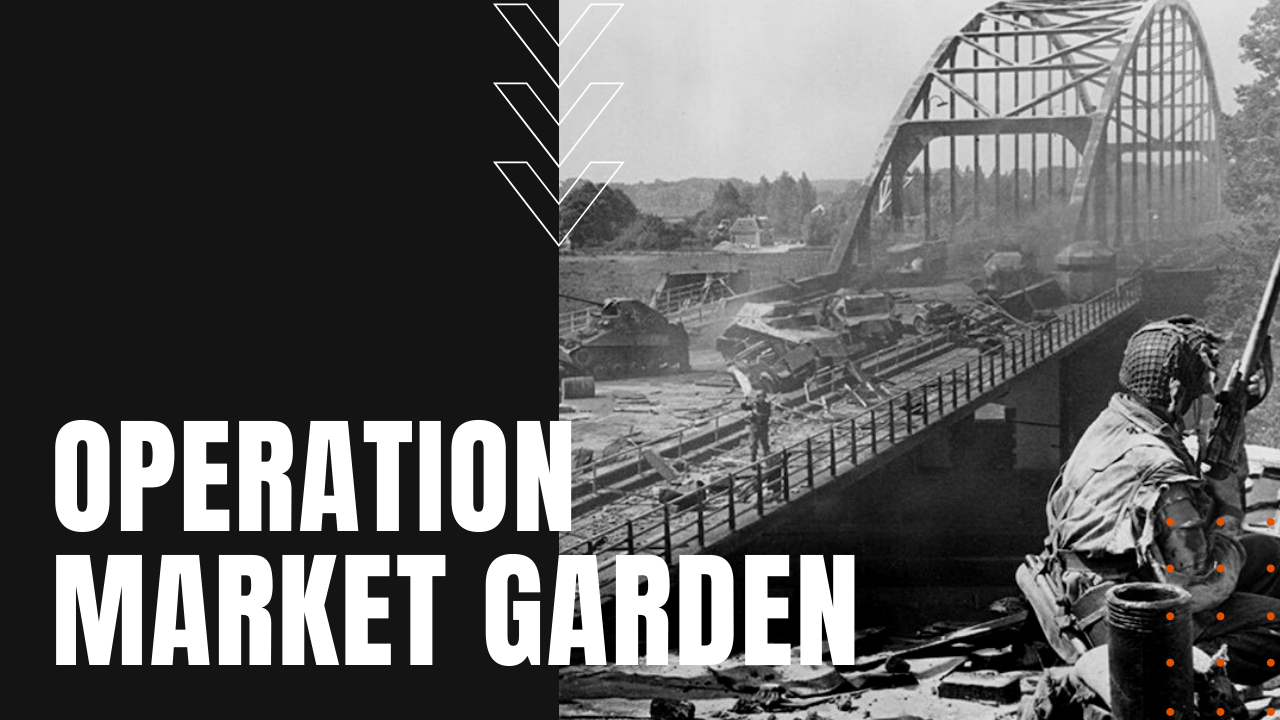Operation Market Garden

With the intent of hastening the end of the war with Germany, British Field Marshal Bernard Montgomery devised a plan to create a 64-mile salient or bulge along the northern end of the German’s thus far impregnable Siegfried Line in the Netherlands, establishing a massive offensive opening for an Allied push into the industrial heartland of Germany’s Ruhr Valley.
What Was Operation Market Garden?
Code named Market Garden, the Market part of the operation called for three airborne divisions to land men and equipment by parachutes and gliders, while ground forces—the garden half of the plan—would cross six formidable water obstacles, seizing vital territory and bridges on their push to the Rhine River.
Plagued by mistakes from the operation’s first engagement on September 17th, 1944, some 10,000 British and Polish troops from the British 1st Airborne were dropped miles from their objective at Arnhem, due to heavy German anti-aircraft defenses around the city. Fewer than 800 men would reach the Arnhem bridge, while the rest were forced into a pocket by two German panzer divisions near the village of Oosterbeek.
Why Did Operation Market Garden Fail?
To add to the operation’s problems, bad weather and a shortage of transport planes slowed the buildup of Allied troops on the ground, landing men over a three-day buildup period instead of all at once, which negated any chance for an overwhelming assault against dug-in German forces.
To make matters worse, radio communication was made useless by flat wooded landscapes and spread-out landing zones, further dampening Allied attempts at a coordinated offensive. Allied ground relief columns led by Britain’s XXX Corps discovered that roads leading up to Arnhem were too narrow for adequate tank passage, made worse by German infantrymen who picked off nine leading British tanks with anti-tank weapons, further limiting Allied progress to a mere eight miles during their first day on the ground.
The slow Allied advance gave Germany time to strengthen its defenses, which effectively stalled Allied ground troops near the town of Nijmegen, while the British XXX Corps suffered crippling losses at Arnhem. With the main objective of Operation Market Garden lost by September 24th, of the approximate 10,600 Allied troops who pushed their way north across the Rhine, only 2,700 would retreat in failure on September 25th, after suffering 7,900 casualties in their failed offensive over the nine-day battle that made up Operation Market Garden.
While seizing much of the Netherlands from German control, the Allies would see more than 17,000 casualties, while the Germans suffered 8,000. If Operation Market Garden had gone as planned, military historians believe that World War Two could well have ended before Christmas of 1944, but instead, the conflict in Europe would drag on for another five long months, until Soviet troops overtook Berlin in May of 1945, making Operation Market Garden, one of the worst Allied blunders of the Second World War.
